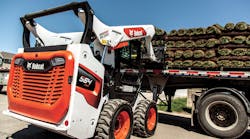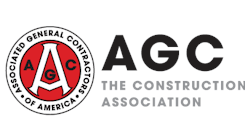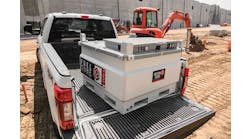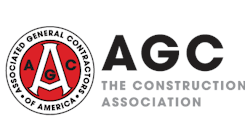Seasonally adjusted construction employment in December trailed the pre-pandemic February level in 34 states, exceeded it in 15 states and the District of Columbia, and held steady in Kansas, according to Associated General Contractor’s analysis of Bureau of Labor Statistics (BLS) data posted on Tuesday.
Texas lost the most construction jobs between February and December (-35,600 jobs or -4.5%), followed by New York (-30,900, -7.5%), Florida (-17,500, -3.0%), and New Jersey (-16,700, -10.0%). Vermont experienced the largest percentage loss (-23%, -3,400 jobs), followed by New Jersey. Virginia added the most jobs (10,800, 5.3%), followed by Utah (7,000, 6.1%) and Alabama (6,100, 6.4%). Alabama added the highest percentage, followed by Utah and South Dakota (5.7%, 1,400). Construction employment decreased from November to December in 11 states and D.C., increased in 37 states and was unchanged in North Carolina and Rhode Island.
Arizona had the largest loss of construction jobs for the month (-4,100 or -2.3%), followed by Louisiana (-2,000, -1.5%). Delaware had the largest percentage decline (3.2%, -700 jobs), followed by Arizona, Alaska (-1.9%, -300), and Louisiana. California added the most construction jobs over the month (31,600, 3.7%), followed by New York (8,500, 2.3%) and Illinois (8,300, 3.8%). New Hampshire had the largest percentage gain for the month (4.0%, 1,100 jobs), followed by Illinois and New Mexico (3.8%, 1,800). AGC posted a table showing the peak month for construction employment in each state, dating back to 1990. Idaho, Indiana, and Utah set new highs in December. (BLS reports combined totals for mining, logging and construction in D.C., Delaware and Hawaii.)
“The start of 2021 has brought a historic number of [materials price hikes, which] are occurring frequently and at levels not seen since 2008,” New South Construction Supply reported on Wednesday. “Construction commodity products such as rebar, reinforcing mesh, poly, and lumber have all seen record increases in both frequency and dollar amount. Rebar pricing is now up $185 per ton from where it was just a month and a half ago Monday. Wire mesh reinforcement has also seen a rapid increase in pricing over the past few months. Polyethylene manufacturers announced price increases that will go into effect early February. This price increase is ranging from 6% to 8% depending on the manufacturer. Demand remains high and lead times are now consistently running in the three-to-four-week range. Lumber is once again a commodity on the rise. Very few loads are available promptly and most loads are being quoted with two- or three-week lead times.” Readers are invited to send price announcements to [email protected].
Total compensation (wages, salaries, and benefits, including required employer payments) in the construction industry rose 0.7%, seasonally adjusted, in the fourth quarter (Q4) of 2020, compared to 0.3% in Q3 and 0.9% in Q4 2019, BLS reported today. Wages and salaries in construction rose 0.8% in Q4, vs. 0.2% in Q3 and 0.8% in Q4 2019. Over 12 months, compensation increased 2.4%, vs. 3.5% in the previous 12 months, while wages and salaries rose 2.8%, down from 3.5% in 2019. BLS does not break out benefit costs for construction, but the fact that total compensation increased less than wages in 2020 (2.4% vs. 2.8%) indicates that benefit costs rose less rapidly than wages. For all private industry employees, employer costs in 2020 increased 2.5% for total compensation, 2.6% for wages and salaries, and 2.1% for total benefits (including 1.9% for health insurance).
Two additional recent reports provide perspective on construction compensation trends. “The first year of new union settlements in the construction industry reach during 2020 had an average increase of 2.8%...based on the total package (wages, fringe benefits and other employer payments),” compared to 2.9% in 2019, the Construction Labor Research Council reported on Wednesday. “The largest average, by far, was for the Northwest,” 4.0%. The smallest increases among the nine Census divisions were in the Southeast and South Central, 2.6% each. Among 18 crafts, increases “ranged from 2.0% for ironworkers to 3.4% for operating engineers.”
An analysis of the impact of the pandemic on union settlements that compared settlements from April 1 to December 31, 2020 to settlements in 2019 found a large increase in 1- and 2-year settlements, although three years remained the most common length. Construction compensation consultancy PAS reported on December 30, “In 2020 the percentage of firms improving their benefit programs was 29.6%. The percentage of firms reducing their level of benefits in 2020 was 1.3%. And continuing an 18-year trend, voluntary benefits (health, retirement, paid time off, etc.) averaged approximately 25% of payroll (25.1%).”
Inflation-adjusted gross domestic product (real GDP) increased 4.0% at a seasonally adjusted annual rate in Q4, the Bureau of Economic Analysis (BEA) reported on Thursday. The increase followed a record drop of 31% in Q2 and record increase of 33% in Q3, leaving real GDP 2.5% below the Q4 2019 level. There was a 3.0% increase in real gross private domestic investment in nonresidential structures, but this was driven entirely by the inclusion of investment in wells and mines, which soared 246%. Real investment in commercial and health care structures slumped 7.5%; manufacturing structures declined 6.4%; power and communication structures tumbled 15%; and other non-mining structures fell 16%. Real residential investment in permanent-site structures leaped 64%, including investment in single-family structures, 81%, and multifamily structures, 8.8%. Real government gross investment in structures declined 0.6%, including federal investment for defense structures, -9.4%; nondefense structures, 2.8%; and state and local structures investment, -0.4%. The GDP price index increased 2.0%, with price indexes for nonresidential structures investment, -0.02%; residential investment, 6.0%; and government investment in structures, 2.7%.





